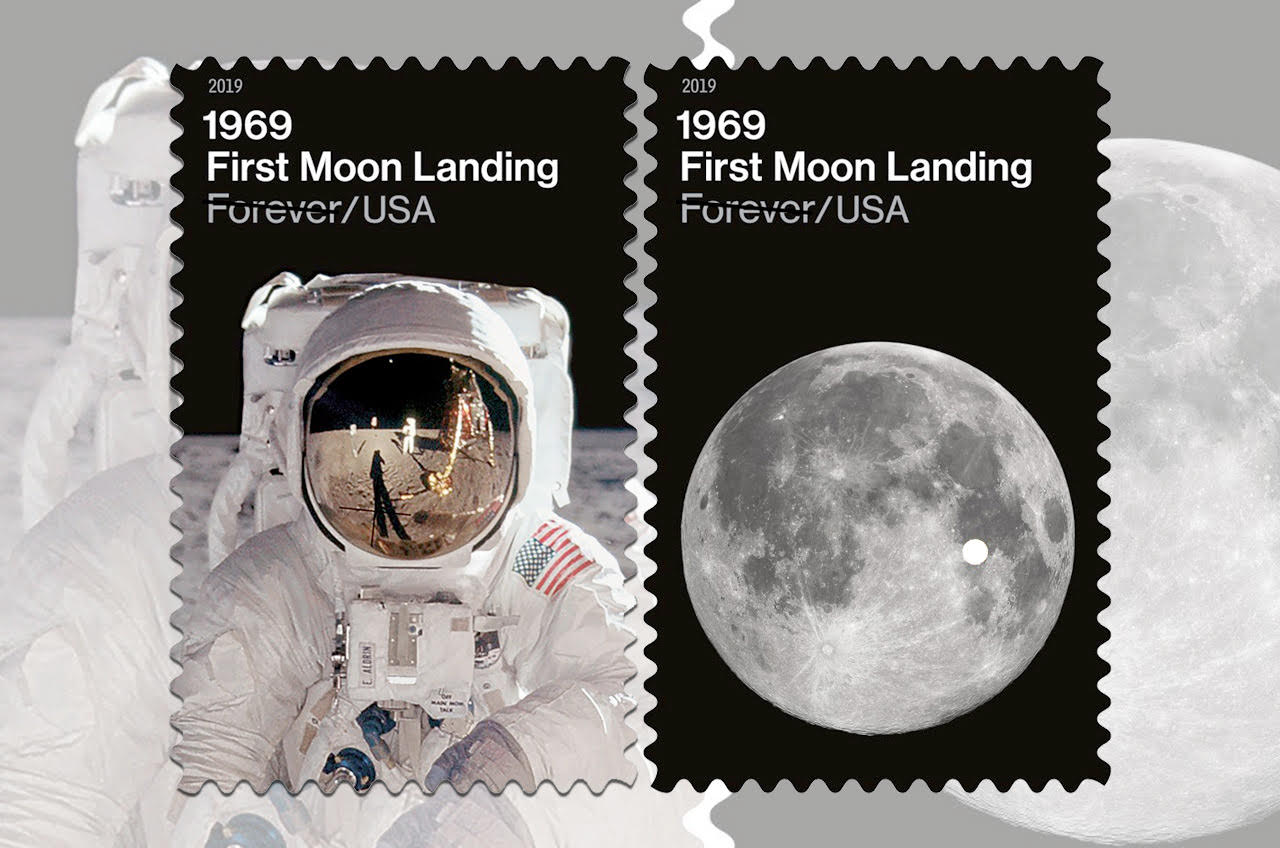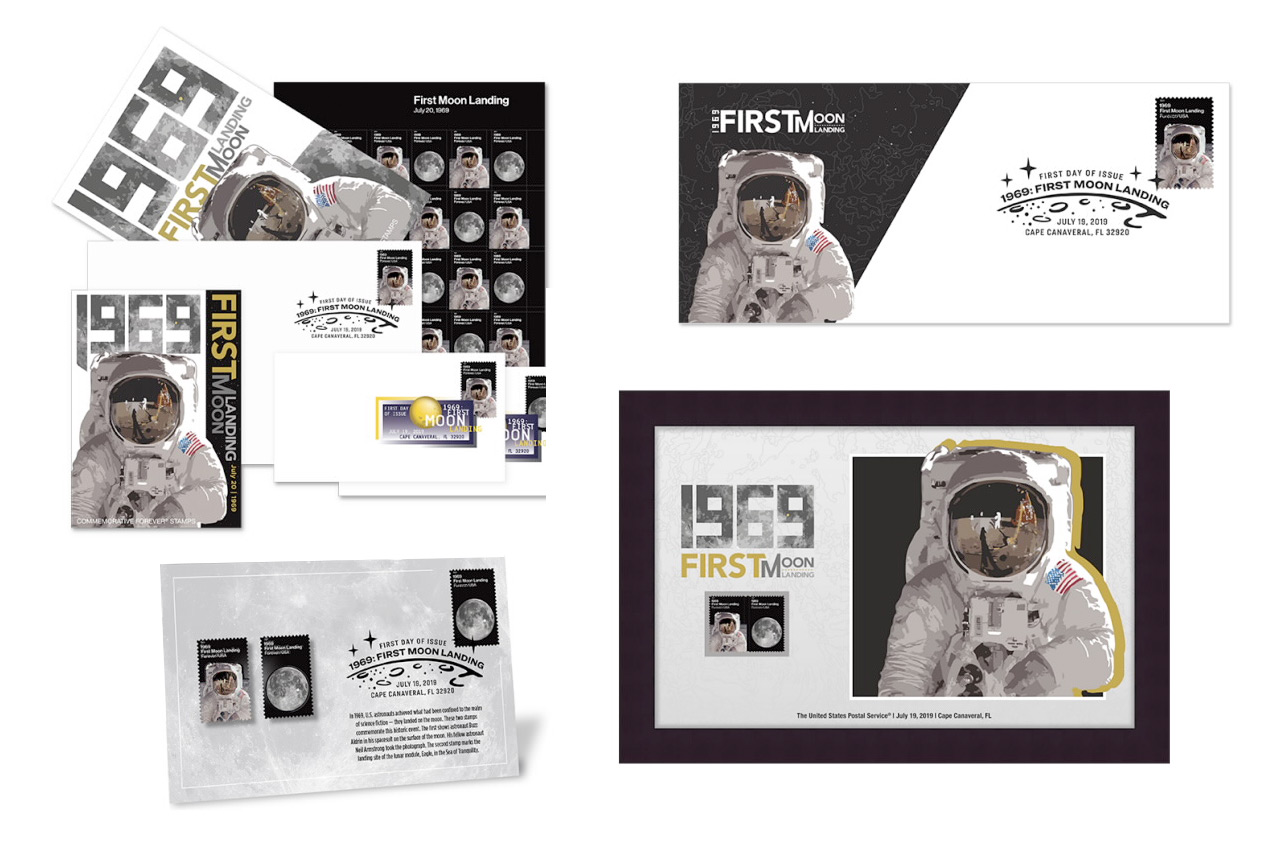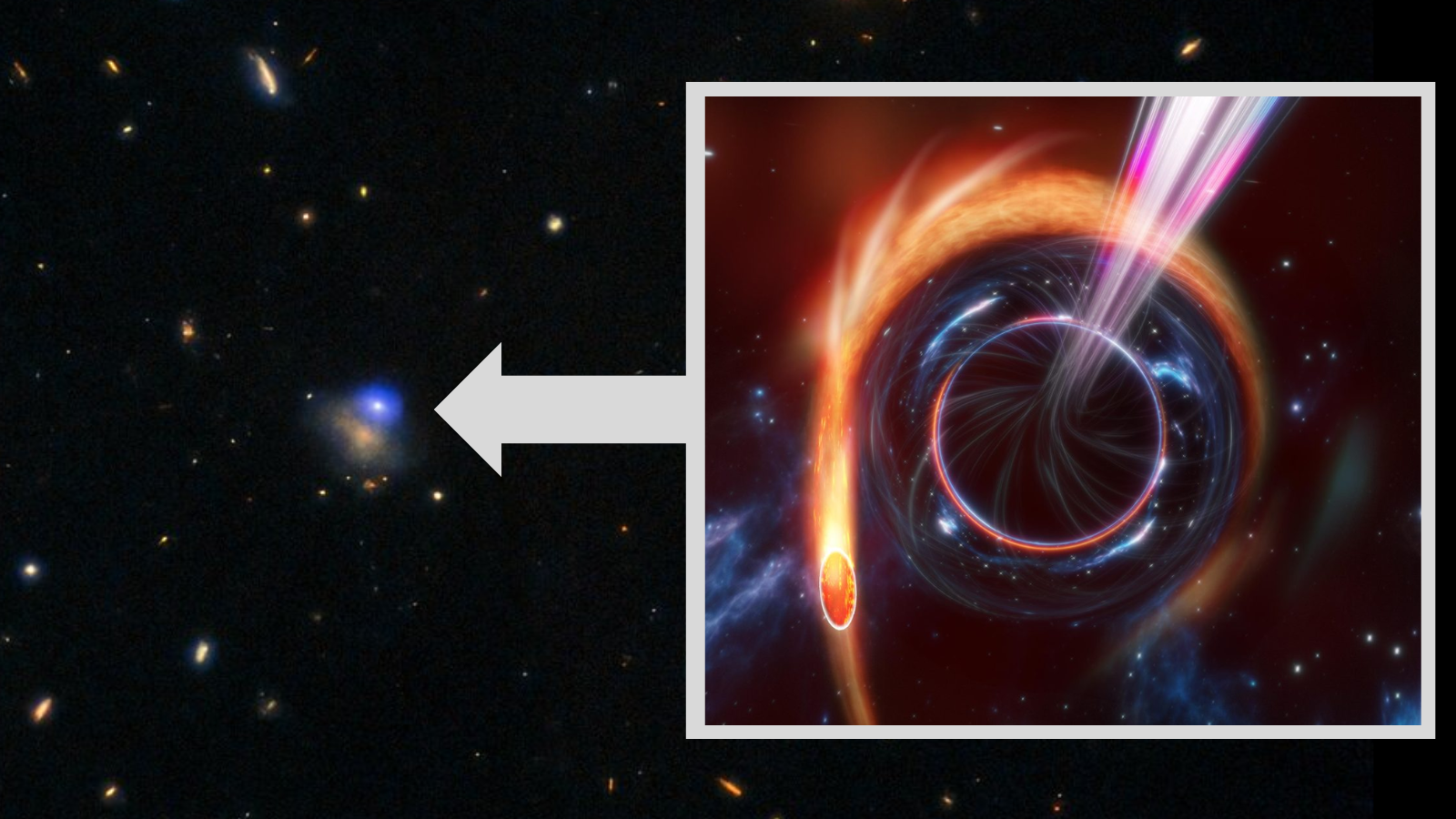USPS '1969: First Moon Landing' Stamps Pinpoint Tranquility Base

You can now use your U.S. mail to pinpoint where humans first landed on the moon.
New postage stamps issued by the United States Postal Service (USPS) on Friday (July 19) include a photo of the moon with Tranquility Base highlighted by a metallic silver dot, commemorating the 50th anniversary of the first moon landing.
A second stamp in the new Forever-denomination pair reproduces part of an iconic photograph of Apollo 11 lunar module pilot Buzz Aldrin showing the mission's lunar module Eagle, the American flag and commander Neil Armstrong in the reflection of his helmet's visor.
Related: Apollo 11 at 50: A Complete Guide to the Historic Moon Landing
"It is a honor for me to represent the U.S. Postal Service as we dedicate the 1969: First Moon Landing Forever stamps, which celebrates the 50th anniversary of one of our country's greatest scientific and technological achievements," said Thomas Marshall, USPS general counsel and executive vice president, who served as the dedicating official at a first-day-of-issue ceremony at the Kennedy Space Center in Florida on Friday.
The two stamps, which each have a current face value of 55 cents, are sold in sheets of 24, with 12 of each design. The USPS is also offering a number of collectible products featuring the "1969: First Moon Landing" commemoratives, including:
- A set of two first day covers (stamped and postmarked envelopes), one for each stamp, each canceled on the day of issue in Cape Canaveral, Florida with an ink pictorial postmark ($1.98).
- A set of two stamped covers featuring a digital color postmark, also issued in Cape Canaveral ($3.40).
- A stamped and ink postmarked envelope with a cachet design that matches the Aldrin photo stamp ($9.95).
- A "keepsake" set that pairs the digital postmark covers with one sheet of 24 stamps ($16.95).
- A 1969: First Moon Landing stamp pin set that includes lapel pin versions of the two stamps and a presentation card that is stamped and postmarked for the first day of issue ($18.85).
- A stamp ceremony memento pack that includes two digital color postmark first day covers, a pane of 24 stamps, a ceremony invitation and a first day of issue ceremony program ($20.95).
- A framed presentation that includes a block pair of the stamps mounted on a 16.5-by-11.5-inch (42-by-29-centimeter) display that features the image of Aldrin from the issued stamp ($32.95).
The stamps are available at post offices across the United States. The philatelic collectibles are offered through the USPS stamp shop on its website.
Breaking space news, the latest updates on rocket launches, skywatching events and more!
In addition to the retail first day covers, the public can also purchase stamps, apply them to their own envelopes and send them to the USPS to create their own first day collectibles. The Postal Service will accept requests for first day of issue 1969: First Moon Landing postmarks (ink or digital color) through Nov. 19.
For the ink postmark, stamped envelopes should be sent either self-addressed or with a return envelope large enough to accommodate the canceled items and with sufficient postage affixed for return of the postmarked items to:
FDOI — 1969: First Moon Landing
USPS Stamp Fulfillment Services
8300 NE Underground Drive, Suite 300
Kansas City, Missouri, 64144-9900
There is no charge for the first 50 ink postmarks. There is a 5-cent charge for each additional postmark over 50.
For the digital color postmark, some additional constraints and costs apply. No. 6 or 10 envelopes constructed of paper rated as "laser safe" can be sent, along with two required test envelopes, to the same address as above. There is a minimum of 10 envelopes at 50 cents per postmark required. Additional details can be found in the Postal Bulletin, available on the USPS website.
Additional commemorative postmarks and the addresses where to send requests can also be found in the Postal Bulletin.
The stamps mark the fourth time that the USPS has commemorated the first moon landing on postage. Starting with a 10-cent "First Man on the Moon" airmail stamp issued two months after Apollo 11 returned to Earth, additional commemoratives were released for the 20th, 25th and 30th anniversaries. With the exception of the two latest releases in 1999 and 2019, all of the stamps were designed by the late space artist Paul Calle or his son, Chris.
The 2019 "1969: First Moon Landing" stamps were designed by USPS art director Antonio Alcalá. The photograph of the moon used on one of the stamps was taken by amateur astronomer Gregory Revera of Huntsville, Alabama.
The United States is not alone in releasing stamps for the 50th anniversary of the moon landing. More than a dozen other countries' postal services also issued commemoratives honoring the U.S. mission, including Australia, Austria, Canada, France, Germany, Gibraltar, Isle of Man, Jersey, Liechtenstein, Monaco, Spain, Sweden and Switzerland.
- US Postal Service Offers Passport to Travel Through Space History in Stamps
- Photos: Space Age Postage Stamps Through History
- UN Postage Stamps to Mark 50 Years of 'Peaceful Uses of Outer Space'
Follow collectSPACE.com on Facebook and on Twitter at @collectSPACE. Copyright 2019 collectSPACE.com. All rights reserved.

Robert Pearlman is a space historian, journalist and the founder and editor of collectSPACE.com, a daily news publication and community devoted to space history with a particular focus on how and where space exploration intersects with pop culture. Pearlman is also a contributing writer for Space.com and co-author of "Space Stations: The Art, Science, and Reality of Working in Space” published by Smithsonian Books in 2018.
In 2009, he was inducted into the U.S. Space Camp Hall of Fame in Huntsville, Alabama. In 2021, he was honored by the American Astronautical Society with the Ordway Award for Sustained Excellence in Spaceflight History. In 2023, the National Space Club Florida Committee recognized Pearlman with the Kolcum News and Communications Award for excellence in telling the space story along the Space Coast and throughout the world.


